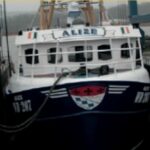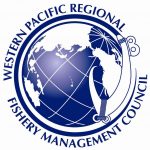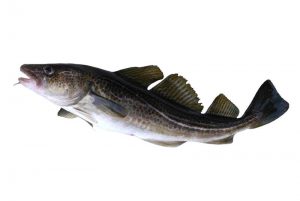NOAA Fisheries Announces 2020 At-Sea Monitoring Coverage Levels for Groundfish Sector Fishery
January 28, 2020
NOAA Fisheries announces that for fishing year 2020, the total target at-sea monitoring coverage level is 40 percent of all groundfish sector trips subject to the at-sea monitoring program. For more information, please read our letter to the New England Fishery Management Council and the Summary of Analysis Conducted to Determine At-Sea Monitoring Requirements for Multispecies Sectors FY 2020.
Per direction in 2020 appropriations, we have funds allocated for reimbursing industry for its at-sea monitoring costs. The Atlantic States Marine Fisheries Commission will continue to administer the reimbursement program for 2020 as in prior years.
Questions?
Fishermen: Contact Mark Grant, Regional Office, 978-281-9145
Media: Contact Allison Ferreira, Regional Office, 978-281-9103
Letter to the New England Fishery Management Council
Dr. John Quinn Chairman New England Fishery Management Council 50 Water Street Mill 2 Newburyport, MA 01950
Dear John:
UNITED STATES DEPARTMENT OF COMMERCE National Oceanic and Atmospheric Administration NATIONAL MARINE FISHERIES SERVICE GREATER ATLANTIC REGIONAL FISHERIES OFFICE 55 Great Republic Drive Gloucester, MA 01930-2276
JAN 2 8 2020
The total combined target level of at-sea monitoring (ASM) coverage required for Northeast multispecies sectors in fishing year 2020 will be 40 percent of all sector trips subject to the at-sea monitoring program.
NOAA’s National Marine Fisheries Service is required to determine ASM coverage levels that are “sufficient to at least meet the coefficient of variation specified in the Standardized Bycatch Reporting Methodology at the overall stock level for each stock of regulated species and ocean pout, and to monitor sector operations, to the extent practicable, in order to reliably estimate overall catch by sector vessels [emphasis added] (50 C.F.R. § 648.87(b)(l)(v)(B)(l)(i)).” When we make this determination, the regulations require that we take into account “the primary goal of the at-sea/electronic monitoring program to verify area fished, as well as catch and discards by species and gear type, in the most cost-effective means practicable.” The regulations also require that we consider the “equally-weighted secondary goals and objectives of groundfish monitoring programs detailed at § 648.11 (1), the National Standards and requirements of the MagnusonStevens Fishery Conservation and Management Act, and any other relevant factors.” Two federal district court decisions upheld these regulations, with the judge specifically noting that these goals and objectives are consistent with our Magnuson-Stevens Act requirement to ensure catch accountability. In one case, the judge pointed out that we are “obligated to consider the goals of the program-including improving documentation of catch- when setting coverage levels at or above the bare minimum set by the CV [coefficient of variation] standard.” Oceana v. Pritzker, 26 F.Supp.3d 33, 47 (D.D.C.2014). Improving catch documentation includes determining sector total catch and achieving a coverage level sufficient to minimize the effect of any potential monitoring bias. I considered all of these requirements to determine this year’s coverage level.
Our annual analysis to determine the level of ASM coverage required to estimate discards for each northeast multispecies stock with no greater than a 30-percent CV calculated a minimum target coverage level of 32 percent of all groundfish sector trips, based on Georges Bank winter flounder. A summary of that analysis is enclosed and is available at (https://go.usa.gov/xdaKc). In addition to the CV analysis, we also considered four analyses of bias developed by the Groundfish Plan Development Team (PDT) and the peer review by a sub-panel of the Council’s Scientific and Statistical
Committee (SSC). The SSC sub-panel concluded:
(T)he set of studies provide substantial support to conclude that there are differences both in discarding behavior and in fishing behavior between observed and unobserved trips. The analyses suggest that discard estimates from observed trips should not be used to estimate discards from unobserved trips, or at minimum not without some adjustments. In addition, this suggests it is not appropriate to determine a level of observer coverage that should be deployed by considering the coefficient of variation of discard estimates from observer coverage since observed trips are not representative of unobserved trips.
Given the PDT’s work and the conclusions of the SSC sub-panel, I am concerned it would be inappropriate to base the fishing year 2020 target coverage solely on the results of the CV analysis. Consistent with the regulations and the Court’s ruling in Oceana v. Pritzker, I have determined that coverage needs to be increased above the minimum coverage necessary to achieve a CV30 in order to address their conclusions. Consistent with the requirement to monitor sector operations and to reliably estimate overall catch to the extent practicable, I am setting the coverage target level at 40 percent.
Setting the coverage target level at 40 percent takes into account what may practicably be achieved in the next fishing year while the Council continues to develop Amendment 23 and address the issues raised by the bias analyses and the associated peer review. A 40-percent coverage target is also consistent with the other goals and objectives of the monitoring program, including improving documentation of catch. The PDT’s on-going work and the SSC subpanel’s conclusions make it clear that the coverage level must incorporate more than the CV30 analysis standard. There is still critical development and analysis required to determine the coverage level and other measures that may be necessary to address bias over the long term and other issues identified before Amendment 23 is completed. Attempting to develop a new method for calculating the necessary coverage for 2020 while the Council continues development of Amendment 23 would be impractical and inappropriate, and I want to avoid predetermining the Council’s decisions ahead of further development, analysis, and public participation. There are also many implementation concerns with large increases in coverage that we must take into account. After evaluating our ability to scale up coverage in collaboration with monitoring providers, I have determined that 40-percent coverage is the most practicable for fishing year 2020. As we have seen, it takes time for the agency, monitoring providers, and industry members to ramp up coverage levels. Accordingly, the 40-percent target represents an achievable increase.
I am announcing my determination now to allow time for us to prepare to support increased coverage, for monitoring providers to ensure sufficient staff, for sectors to work with providers to contract service, and for industry members to make decisions for fishing year 2020. We expect to continue to have funding available to reimburse industry for their at-sea monitoring costs in fishing year 2020.
2
If you have further questions about the fishing year 2020 ASM coverage target, please contact Sarah Heil, Assistant Regional Administrator for Sustainable Fisheries, at (978) 281-9257.
Sincerely, Michael Pentony r P ~ n J :~ Regional Administrator













































